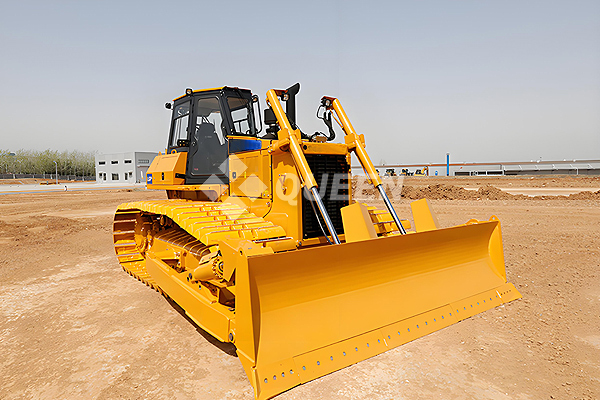Bulldozers are heavy-duty construction machines widely used in earthmoving, mining, forestry, and infrastructure projects. Equipped with a large front blade, they can push, level, and transport soil, sand, gravel, and debris efficiently. Modern bulldozers come in various sizes and configurations to meet different operational needs.

Key Components of a Bulldozer
1. Engine: Provides the power needed to operate the machine and its hydraulic systems.
2. Blade: Mounted at the front, used for pushing and leveling materials. Types include straight blade, universal blade, and semi-universal blade.
3. Tracks or Wheels: Tracks provide better traction on rough terrain, while some smaller bulldozers use wheels.
4. Ripper: An optional rear attachment for breaking up hard soil or rock.
5. Cab: Houses the operator with controls and may include air conditioning and safety features.
6. Hydraulic System: Powers blade movement, ripper operation, and other auxiliary functions.
Main Technical Parameters
1. Operating Weight – Determines stability and traction.
2. Engine Power – Affects pushing capacity and overall efficiency.
3. Blade Capacity – Indicates how much material can be moved in one pass.
4. Ground Pressure – Lower pressure improves mobility on soft ground.
5. Ripper Force – Important for breaking hard soil or rock.
6. Travel Speed – Affects productivity on large sites.
These specifications vary depending on the model and manufacturer. Choosing the right bulldozer depends on the type of material, worksite conditions, and production requirements.
Applications of Bulldozers
Construction sites – For leveling land and preparing foundations.
Mining operations – To move overburden and assist in excavation.
Forestry and agriculture – Clearing land, building access roads, and maintaining terrain.
Disaster relief – Removing debris after landslides or floods.
Bulldozer price
The price of a bulldozer depends on factors such as engine power, blade type, attachments, and production capacity. To select the right machine, buyers should evaluate:
The terrain and soil type at the worksite.
Required pushing and ripping capacity.
Operational efficiency and fuel consumption.
Maintenance and availability of spare parts.
By understanding these factors, customers can choose a bulldozer that maximizes productivity, efficiency, and return on investment.

